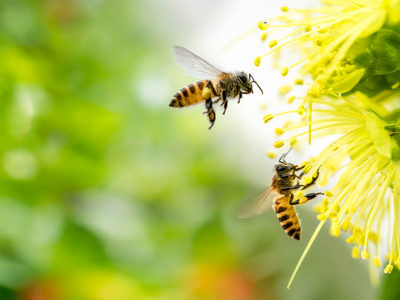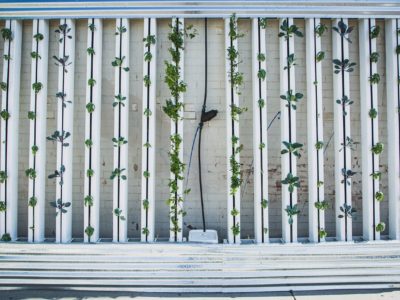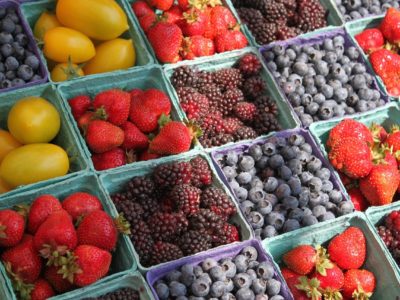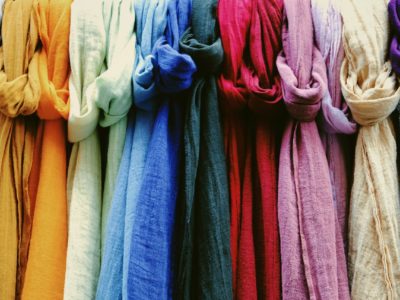Table of Contents[Hide][Show]
If a morning brew is what you do, you’re not alone. In fact, according to a 2022 national survey, 74% of Americans drink coffee every day and 49% indulge in 3–5 cups a day. That’s over 246 million cups per day (no including multiple cup drinkers)! Could the right choice of coffee beans mean a better brew and a healthier planet? Let’s find out what this crave-worthy buzz means to our personal lives and the farmers who cultivate it.
Grab Your Favorite Mug & Let’s Brew the Facts
A trip to the local coffee shop is a strong reminder of how much this beverage is desired (just look at those lines!), but what happens behind the scenes before it is poured into our cups?
Well, coffee is one of the most heavily traded commodities in the world, and it’s a $100 billion dollar industry. It’s the economic backbone of countries throughout Latin America, Asia, and Africa. Not only that, there are over 25 million people in the world who depend on the production of coffee for their survival. The smallholder farmers from these coffee producing regions are bombarded by many challenges like poverty, unpredictable rainfall patterns (from climate change), and commodity price fluctuations.
Millions of lives across the globe are affected by coffee production, but what’s happening with the planet?
According to a study published in Bioscience, the demand for more coffee has lead to an intensive style of coffee farming which could be completely detrimental—not only to the farmers and communities, but also to the environment.
Traditionally, coffee has been been shade grown and cultivated under a canopy of native forest trees. Why is this important? Because a lush, well-preserved forest provides an environment that is brimming with wildlife. Shade grown coffee plantations actually attract and support pollinators like bees and bats and enable ecosystem services like filtering water and air, stabilizing soil, storing carbon, and replenishing soil nutrients.
On the other hand, intensive coffee production is simply not sustainable and it’s characterized by clearing forests or pasture for cultivation. Sadly, these full sun coffee plantations can result in deforestation which kills off biodiversity, leads to soil depletion, and leaves communities more vulnerable to landslides and flooding.
Related
How Do We Save The Bees? And Why?
Put on your imaginary cape and find out how to save the bees from extinction today! Read on to find out more. RELATED: Review: “Burt’s Buzz” Tells The Story of The Man Behind Burt’s Bees In this article: How to Help Save the Bees from Utter Destruction and Be the Real-Life Captain Planet Why Should …
3 Tips to Finding the Most Sustainable Coffee
Now that we have the steep facts about coffee production and a behind the scenes look at our morning buzz, how do we invest in the sustainable coffee brands, ones that adhere to practices that respect the people and the planet?
1. Brew Mindfully
Every trip to the grocery store is an opportunity to vote with our dollars. Do the shopping decisions we make hurt or help the farmers who cultivate our beloved beverages? It’s important to pause and ponder before we bind ourselves to a specific brand. Before you grab a bag of coffee, look beyond the label and uncover the truth.
2. Read the Labels
Many popular coffee brands are anything but sustainably made and instead ridden with pesticides. Poor quality coffee is less expensive, but the harmful effects on our body, communities, and earth are not worth the lower price. Rather, look for brands that are labeled Rainforest Alliance Certified or Fair Trade Certified.
The good news is that there are many coffee companies out there that are devoted to caring for the planet by cultivating it in environmentally friendly ways. Here are some brands we recommend:
- Bulletproof – Bulletproof is Rainforest Alliance Certified, sustainably-sourced from small farms, and independently lab tested for toxins.
- Lifeboost – Lifeboost is 3rd Party tested for mycotoxins, heavy metals, and over 400 toxins, hand selected, high elevation and shade grown, and supports people, environment and wildlife through sustainable practices.
- Four Sigmatic – Four Sigmatic’s coffees are a blend of coffee and functional mushrooms. So if you’re looking for a cognitive edge, this brand may be for you. They are organic, Fair Trade Certified, single-origin, and 3rd party lab tested. The brand has also partnered with TenTree to become climate+ by planting 40,000 trees.
3. Take Your “Coffee Talk” to the Next Level
One of the best ways to get the message out there about better, more sustainable coffee brands is to simply talk about it. Invite your friends over, make a pot of coffee, and talk about what a better brew looks (and tastes) like. Upgrading your coffee experience is a win-win situation; not only are you getting coffee that has been made under the best conditions (under the shade of the forest canopy which reinforces biodiversity), but you are also supporting the lives of the farmers who helped to make it available to you in first place.
Shopping for a great coffee should never come at the expense of our environment or the lives of other people. Seek out certified brands, read the labels carefully, and share the news with your friends and family.
Remember, micro-decisions matter, even if it’s as simple redirecting our daily grind.
You May Also Like…





